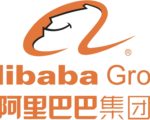The release of DeepSeek’s highly effective and cost-efficient large language model has made waves in the AI industry, promising far-reaching implications for technology, trade, and U.S.-China economic relations. While the immediate market impact may have been brief, the long-term effects could be profound. Here are four predictions on how DeepSeek might shape the future:
-
Artificial Intelligence Costs Will Continue to Plummet
Innovations typically aim to achieve more with less, and AI is no different. Before DeepSeek’s release, the costs of leading AI models had already fallen by about 80% annually over the past two years. DeepSeek has accelerated this trend by making AI models 30 times cheaper compared to market leader OpenAI, through algorithmic advancements and aggressive pricing strategies. This deflationary trend is expected to persist as more research and competition in the AI field drive costs lower. -
The AI Economic Pie Will Get Bigger and Be Sliced Differently
As AI becomes more affordable and accessible, demand is expected to grow, following the concept of Jevons paradox, which suggests that more efficient technology leads to greater consumption of resources. As foundational models become commoditized, the focus will shift to applications, pushing more resources toward the deployment of AI in specific tasks, or “inference,” rather than training models. This shift could spark increased demand for custom-designed chips like XPUs, optimized for specific AI applications, as opposed to traditional GPUs. Nvidia has already observed that demand for inference chips is growing faster than for training chips, signaling a broader industry shift. -
U.S. Chip Export Controls Will Deserve Careful Reassessment
DeepSeek’s success came from utilizing less advanced and fewer chips than its U.S. counterparts, illustrating how innovation can thrive even under constraints. Despite ongoing U.S. export controls that may limit DeepSeek and other Chinese companies in the short term, these restrictions are unlikely to halt their progress. The U.S. risks isolating its chip technologies from China’s market, potentially on a permanent basis. Additionally, the export controls may undermine U.S. efforts to address trade imbalances with China, as the country may opt to focus on developing its own capabilities rather than relying on U.S. imports. -
U.S. and Chinese Tech Leaders’ Interests May Align
While initially concerning to U.S. investors, DeepSeek’s breakthrough and its open-source model have been embraced by many major U.S. tech companies. Cloud platforms like Microsoft, AWS, and Hugging Face are already incorporating models based on DeepSeek’s R-1, noting that cheaper large language models should increase demand for their cloud services, boosting their revenue streams. In the long run, businesses across both countries could benefit from the productivity gains and cost savings that AI applications offer. This could foster potential collaboration between U.S. and Chinese tech leaders, despite existing tensions. The evolution of AI presents a tremendous opportunity for both superpowers to collaborate, especially as they pursue artificial general intelligence, though ongoing geopolitical conflicts could limit this cooperation.


















